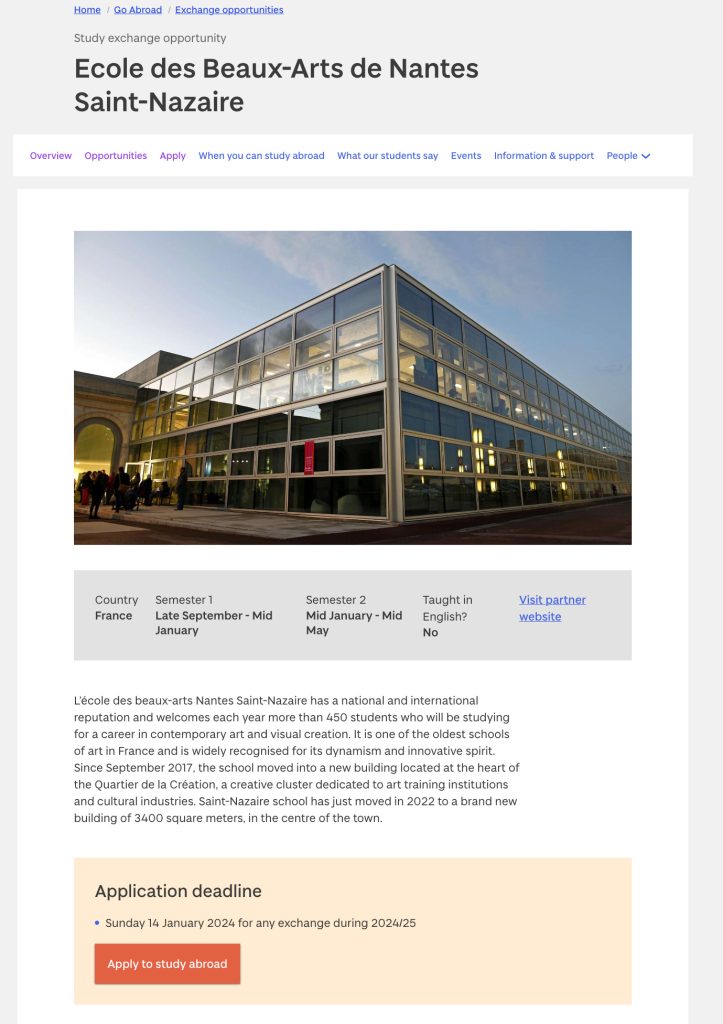This week, we’re excited to launch new web pages for promoting study exchange opportunities at the University.
Go Abroad provides UoD students with study exchange opportunities and also information and support on this topic. Its main focus is a list of overseas partner opportunities that students can browse to help them make a decision about where to study. To ensure that this information is up to date and accurate, the content is sourced from its original source in SITS (the student records management system) via a data feed and synced into the website. This includes:
- the partner name
- associated country
- subjects that students can study
- semester dates
- whether classes are taught in English
We then have the option to enhance pages with additional supporting content such as a photo or a description.
To help students find opportunities that match their requirements, the full list of partners can be filtered by subject, country, and taught in English.
Improvements
From a design perspective, the contrast between the old pages and the new is striking (see images below).


The new pages are clearer, visually more appealing, and on-brand.
Design framework
One of the great benefits of the new University website is that all projects make use of the same, extensive and flexible system of components (our design framework). In the case of the Go Abroad project, a design framework maximises efficiencies during the site build and means very little additional design work was required during the project.
Avoiding confusion
We’ve also taken steps to ensure that the content addresses the correct audience. One potential problem with the old web pages we identified was that a single section of the website was catering for two very distinct groups of users with different needs, namely:
- current UoD students who want to study abroad
- overseas students who want to study at Dundee
Taking that onboard, we created two separate sections on the website:
The old pages frequently used the terms ‘incoming or inbound’ and ‘outgoing or outbound’ in reference to these different aspects of studying abroad. By creating separate sections on the website for these defined audiences, there’s less reliance on these terms and hopefully less potential for confusion.
The Go Abroad team are very happy with the end result. Pam Brown (Go Abroad Manager) was keen to underline this saying,
“Our redesign and migration project was daunting at first, but thanks to the fabulous support, advice and regular updates from Web Services it was a really smooth process and we are delighted with our new webpages. Excellent team to work with!”
Creation of new guide
A new guide – apply to study abroad – has been created that provides students with the information they need to make an application and helpfully illustrates the student journey from application and beyond using our new timeline component.

Future plans
We know that for prospective students, study abroad options can play an important part in their decision to study here. As is often the case with our work, we’re always looking for ways to iterate and improve post-launch. In this respect, we will investigate the possibility of integrating study abroad information with course content to automatically display study exchange availability on our undergraduate course pages.
